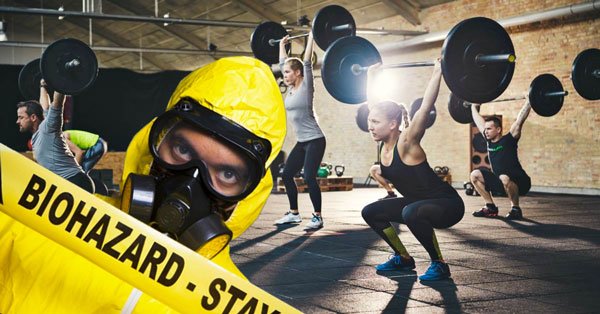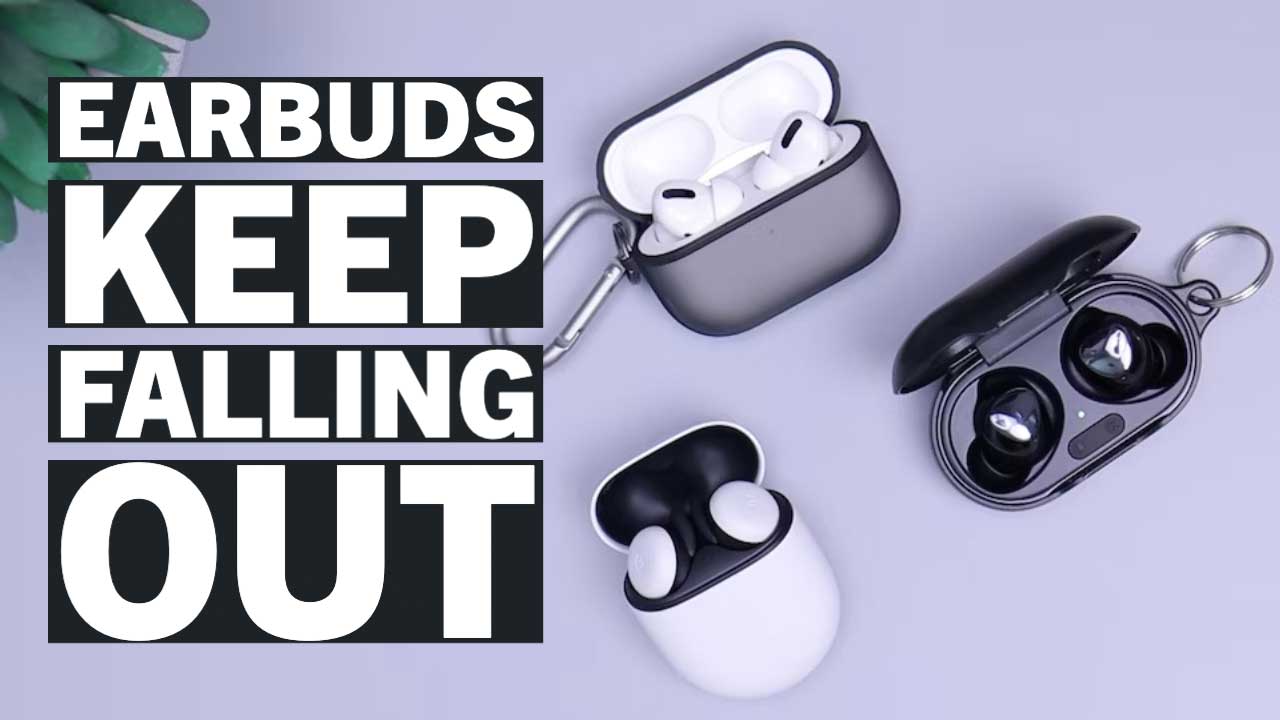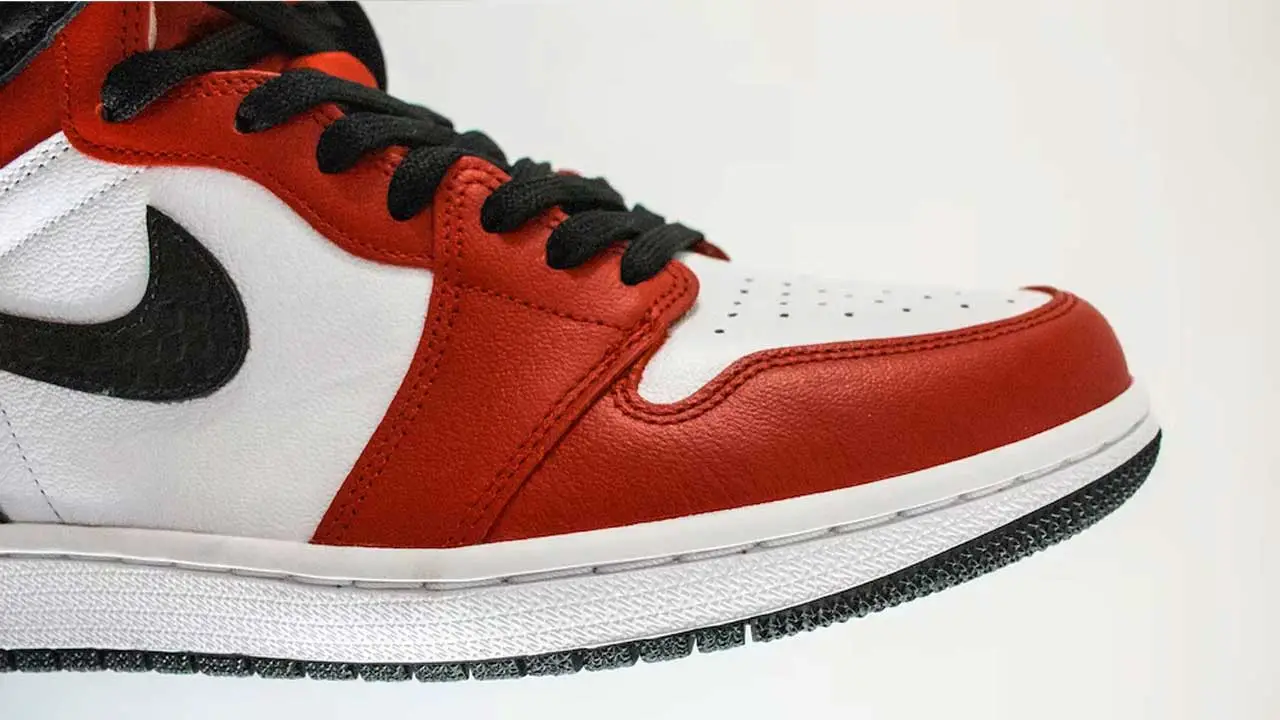Infections from Gym Equipment: Tips to Avoid Germs and Stay Healthy

ListedFit is reader-supported. When you buy through links on our site, we may earn a small commission.
Going to the gym is an excellent way to maintain a healthy lifestyle, but it’s important to be aware of the potential risks associated with using gym equipment.
As you work out, you come into contact with various surfaces like dumbbells, kettlebells, yoga mats, and more.
Unfortunately, these surfaces can harbour germs and potentially lead to infections when you’re exposed to them during your exercise routine.

Quick Summary
Understanding the risks associated with infections from gym equipment is crucial to ensure you’re taking appropriate measures to protect your health.
Among the various infections you may contract are common skin conditions, such as ringworm, warts, and even bacterial infections like MRSA, which can result from contact with shared objects and surfaces in a gym.
Keeping the equipment clean and avoiding damaged surfaces that cannot be adequately sanitised can help you stay safe while improving your fitness.
Key Takeaways
- Be aware of potential infections from gym equipment and surfaces during your workout.
- Skin conditions and bacterial infections are risks that gym-goers should consider.
- Maintain cleanliness and avoid damaged equipment to protect your health while exercising.
In This Article…
Understanding The Risks
Going to the gym is a fantastic way to promote good health and maintain your fitness level. However, it’s important to understand that gyms can also be breeding grounds for various types of infections, bacteria, and germs. From free weights to treadmills, gym equipment often harbours a multitude of microbes that can potentially cause skin infections and other illnesses.
While working out, you inevitably come into contact with sweat—your own and potentially other people’s as well. Sweat creates a humid environment that’s perfect for the growth of bacteria and fungi, which thrive in moist conditions. These microorganisms can live on gym surfaces, waiting for you to touch them and potentially transfer them to your skin or other surfaces.
One of the most common gym-related infections is caused by Staphylococcus bacteria, often referred to as staph. Staph infections can initially present themselves as minor skin irritations but, if left untreated, might escalate into more severe issues. Fungi are another concern, as they can lead to conditions like athlete’s foot or ringworm.
To minimise your risk of infection, it’s crucial to practice good hygiene when using gym equipment. Here are some steps you can take to protect yourself:
- Wash your hands frequently and avoid touching your face, especially after using shared gym equipment.
- Wipe down machines and weights with disinfectant before and after use. Most gyms provide sanitising wipes for this purpose.
- Wear appropriate footwear in locker rooms and shower areas to avoid contracting fungal infections.
- Cover cuts and wounds with a plaster to prevent bacteria from entering into the skin.
- Avoid sharing personal items like towels, water bottles, or headphones, as these can also spread germs.
Common Infections From Gym Equipment
While visiting the gym is a great way to improve your overall health, it’s essential to be mindful of the potential infections that can come from using gym equipment. Here are a few common ones that you may encounter and some practical steps you can take to minimise your risk.
Plantar warts and ringworm are two fungal infections that can be easily contracted in gym environments. These pesky fungi love to live in warm, moist areas like gym mats and shower floors, waiting to latch onto your skin. To avoid catching them, make sure you wear flip-flops in the changing room and while showering, keep your belongings in a separate bag, and ensure you wipe down any equipment before and after use.
Staphylococcus bacteria, more specifically, the more dangerous Methicillin-resistant Staphylococcus aureus (MRSA), are notorious for living on gym equipment like weights, benches, and machines. These bacteria can cause staph infections that might start as small skin irritations but can develop into more severe issues if not treated with antibiotics promptly. To protect yourself from these infections, always wash your hands after touching equipment, cover any open cuts or wounds, and avoid sharing personal items like towels or water bottles.
Many gyms are making it mandatory for their patrons to wipe down equipment after use with a sweat towel, but is this enough to avoid catching something?
An often overlooked but equally important concern in gym environments is the risk of contracting skin infections such as jock itch, athlete’s foot, and impetigo. These can all be spread through skin-to-skin contact or contaminated surfaces, so once again, good hygiene practices are vital in avoiding these unpleasant infections.
Finally, you should be aware of common viruses that can spread in the gym, such as the flu and human papillomavirus (HPV). Although these are not necessarily specific to gym equipment, they can still spread through contact with contaminated surfaces. To minimise your risk, consider getting vaccinated against the flu and HPV, and maintain good hygiene practices like washing your hands regularly and using hand sanitiser when necessary.
In summary, staying mindful of these potential infections and practicing good hygiene can help you enjoy a safer, healthier gym experience.
Can You Get STDs from Gym Equipment?
When heading to the gym, the thought of catching an STD from gym equipment might cross your mind. While gyms can indeed be breeding grounds for bacteria, viruses, and fungi, it’s important to know what you’re actually at risk for and if STDs are a legitimate concern.
Catching an STD from gym equipment is highly unlikely, but it’s still essential to maintain good hygiene practices to protect yourself from other infections.
The truth is, you’re more likely to catch other skin infections from gym equipment rather than STDs. Common skin infections that might be picked up at the gym include warts, ringworm, flu, and staph. These infections can spread through contact with contaminated surfaces, such as gym machines, free weights and mats, as well as towels, benches, and locker rooms.
STDs, on the other hand, are sexually transmitted diseases that require intimate or sexual contact to spread. This means that the risk of contracting an STD from gym equipment is extremely low. However, general cleanliness and proper hygiene should still be maintained to keep yourself safe from other infections.
Here are a few tips to help reduce this risk while at the gym:
- Wipe down gym equipment before and after using it.
- Always wear appropriate footwear in locker rooms and showers to avoid foot infections.
- Use your own towels and avoid sharing them with others.
- Wash your hands regularly and thoroughly, especially after using gym equipment and before touching your face.
Can You Get Chlamydia from Gym Equipment?
When hitting the gym, the last thing on your mind is probably whether or not you could catch chlamydia from the equipment. Thankfully, you can breathe a sigh of relief. Chlamydia is a sexually transmitted disease (STD) and cannot be contracted from gym equipment. It is passed from one person to another through sexual contact, so you won’t have to worry about it while working out.
However, it’s worth noting that there are other infections you can catch at the gym if you’re not cautious. Sharing unclean gym equipment can leave you vulnerable to skin infections like ringworm, athlete’s foot and even staph bacteria which can cause more serious conditions, such as MRSA.
To protect yourself from these infections:
- Make sure to wipe down equipment before and after use with a disinfectant spray or wipe.
- Bring your own towel and avoid sharing towels with others.
- If you use mats or benches, consider laying a towel down before you sit or lay on them.
- Wear flip-flops in gym shower areas to prevent athlete’s foot.
Can You Get Skin Infections from Gym?
Yes, you can get skin infections from gym equipment. Gyms can be breeding grounds for bacteria, viruses, and fungi, which thrive in warm and moist environments. These microbes can be found on various surfaces, such as workout benches, saunas, towels, and even treadmills.
It’s essential to maintain good hygiene habits to minimise the risk of catching an infection. One crucial step is to never walk barefoot in a public gym. Instead, keep a pair of shower shoes, flip-flops, or sandals in your gym bag.
Additionally, you should clean and cover any cuts or wounds you have. Avoid using facilities like saunas, steam rooms, and hot tubs until your wound is fully healed, as these environments can be particularly conducive to the growth of harmful microbes.
Another crucial aspect of gym hygiene is the disinfection of gym equipment. Always clean equipment with disinfectant wipes or spray before and after using it. This practice not only protects you from potential skin infections, but it also helps maintain a clean and safe environment for other gym-goers.
Treatment of Gym Related Infections
If you’re dealing with infections from gym equipment, don’t worry – there are ways to treat them effectively. It’s essential to seek medical attention as soon as you notice any skin conditions or health problems that might be linked to your gym activities.
For bacterial infections, such as those caused by staph bacteria or even toxic shock syndrome, your doctor might prescribe antibiotics. These can help fight the infection and prevent it from worsening. It’s important to follow the instructions given by your medical professional and complete the entire course of antibiotics, even if you start to feel better.
Fungal infections, on the other hand, often require specialised treatment with antifungal medications. Depending on the severity and location of the infection, your doctor might recommend a medicated cream or oral medication. Be sure to apply or take the medication as directed and use it for the entire recommended duration.
Skin conditions such as athlete’s foot or ringworm might also develop due to gym exposures. These conditions typically respond well to over-the-counter treatment options, like antifungal creams or powders. Make sure to clean and dry the affected areas properly before applying the treatment, and continue using the product as instructed, even after the symptoms have subsided.
To prevent further complications or recurrence of gym-related infections, it’s essential to maintain proper hygiene practices and ensure that any shared surfaces are sanitised before use. Be cautious with shared towels and use footwear in communal showers or locker rooms to reduce your risk of exposure to these types of infections.
Remember, being proactive and seeking prompt medical attention is vital if you’re experiencing health problems potentially linked to gym equipment use. Don’t hesitate to consult your doctor for the best advice and treatment options available for your specific condition.
Top 10 Tips: What Can You Do To Protect Yourself?
- Wash your face and hands before and after workouts.
- Avoid touching your face during workouts. If you are a nail biter, stop. If you do come into contact with somebody else’s sweat the last thing you want to be doing it smearing it all over your face or putting it in your mouth.
- Wipe down gym equipment before and after you’ve used it. Some gyms provide tissues for you to do so. Check this out before signing up if you can.
- Go for moisture wicking workout gear to help draw sweat away from your body.
- Lay a towel on equipment such as the bench press so as to avoid coming into contact with other people’s sweat.
- Carry a little bottle of anti-bac sanitizer in case you touch somebody else’s sweat. And rub it on your hands regularly.
- Use flip flops in the shower and try to avoid going barefoot
- Shower as soon as you can after your workout.
- Don’t share towels
- If you do notice a rash that you think could be a skin infection, see a doctor and don’t leave it to clear up on its own.
Gym Equipment and Germs

When you hit the gym, you’re probably focused on your workout and the equipment you’re using. However, it’s essential to be mindful of the germs that can lurk on gym equipment. Shared gym equipment, like leg press machines, yoga mats, and free weights, can harbour a variety of bacteria, fungi, and viruses, posing a risk to your health.
At a typical health club, lots of people use the machines, benches, and other equipment daily, increasing the chances of spreading infectious agents. A study found that handheld weights have approximately 48 times more bacteria than an average toilet seat! Sounds alarming, doesn’t it? But don’t worry, we’ve got some tips to help you minimise the risks.
Firstly, make sure to wipe down gym equipment both before and after using it. Most gyms provide antibacterial wipes or spray for this purpose. Giving the equipment a quick wipe-down helps to remove any lingering germs and makes the gym a cleaner, safer place for everyone.
Next, it’s a good idea to bring your own yoga mat or other personal equipment, if possible. By using your own gear, you can have more control over its cleanliness and limit your exposure to gym germs. If you must use shared equipment, consider placing a towel over the surface as an extra barrier between you and the germs.
Lastly, maintaining good personal hygiene is essential. Always wash your hands thoroughly with soap and water before and after working out. A proper handwashing routine can help to reduce the risk of infections from gym equipment considerably.
By taking these simple precautions, you can continue to enjoy your workouts at the health club without the worry of picking up unwanted gym germs. Just remember to stay vigilant and keep things clean for a healthier, more enjoyable workout experience.

Effects of Infections From Gym Equipment
When you participate in a vigorous fitness routine, you might not pay much attention to the potential health hazards lurking on gym equipment. However, it’s essential to be aware of these risks as they can result in a variety of health problems.
One common issue that can arise from bacteria found on gym equipment is folliculitis. This is an inflammation of hair follicles, resulting in itchy, red, and inflamed skin. These small bumps can be quite uncomfortable and should be treated promptly to avoid further complications.
Another potential health problem you may encounter is cellulitis. This is a potentially serious bacterial infection affecting the skin and underlying tissues. It typically manifests as swollen, red areas on the skin that feel warm and tender to the touch. If left untreated, cellulitis can spread to the lymph nodes and bloodstream, potentially leading to sepsis, a life-threatening condition.
You might also develop boils, which are painful, pus-filled lumps formed under the skin as a result of a bacterial infection. These often occur when bacteria enter your skin through cuts or open wounds. Boils can be quite bothersome and may require medical attention if they persist or worsen.
In addition to these skin-related issues, using shared gym equipment with open wounds or cuts can also increase the risk of more severe infections. Bacteria such as staphylococcus can quickly enter your body through these wounds, potentially leading to infections that require prompt medical intervention.
Frequently Asked Questions
How can I prevent getting an infection at the gym?
To prevent infections at the gym, follow these guidelines: always wash your hands before and after using gym equipment; use a clean towel to create a barrier between your skin and shared surfaces; avoid touching your face while working out; and shower immediately after your workout, paying special attention to your feet if you’ve used the locker room or showers.
Additionally, make sure to wear shoes in all common areas of the gym to protect your feet from infections.
What are common gym-related skin infections?
Some common gym-related skin infections include warts, ringworm, athlete’s foot, and staph infections. These can be caused by bacteria, viruses, or fungi that may be present on surfaces or gym equipment.
It’s essential to practice good hygiene and follow preventative measures to reduce the risk of contracting these infections.
Are fungal infections common in gym environments?
Yes, fungal infections are prevalent in gym environments. Fungi thrive in warm, moist conditions, making gym facilities, locker rooms, and showers prime locations for fungal growth.
Common fungal infections include athlete’s foot and ringworm. To prevent fungal infections, wash and dry your feet thoroughly, change your socks after exercising, and wear shoes in all common areas of the gym.
How to properly clean gym equipment to avoid infections?
To properly clean gym equipment, use a disinfectant spray or wipes specifically designed for workout gear. Make sure to clean all surfaces of the equipment that come into contact with your skin, including handles, seats, pads, and touchscreen consoles.
It’s best to clean the equipment before and after each use, allowing it to air dry before moving on to the next equipment or exercise.
What steps can I take to avoid rashes from gym equipment?
To avoid rashes from gym equipment, thoroughly wash your hands before and after using the equipment.
Use a clean towel as a barrier between your skin and shared surfaces. Keep your skin clean and dry, and shower immediately after exercising to rinse away any bacteria.
Moisturise your skin regularly to maintain its natural barrier, and consider using a barrier cream to protect your skin from irritants.
Can gym equipment transmit viruses or bacteria?
Yes, gym equipment can transmit viruses and bacteria. Research studies have found that gym surfaces, counters, and exercise equipment can harbour bacteria and viruses, making it important to practice good hygiene and properly clean gym equipment before and after each use.
By following preventative measures and maintaining good personal hygiene, you can minimise the risk of contracting infections from gym equipment.
Author
Latest entries
 FitnessAugust 19, 2023Yohimbe vs Yohimbine: A Quick Comparison Guide
FitnessAugust 19, 2023Yohimbe vs Yohimbine: A Quick Comparison Guide AshwagandhaJune 16, 2023Is Ashwagandha Good for Working Out? Key Benefits Explored
AshwagandhaJune 16, 2023Is Ashwagandha Good for Working Out? Key Benefits Explored Sports HeadphonesMay 25, 2023Why Your EarBuds Keep Falling Out – Quick and Easy Solutions
Sports HeadphonesMay 25, 2023Why Your EarBuds Keep Falling Out – Quick and Easy Solutions Nike ShoesMay 12, 2023Do Nikes Run Big or Small? Decoding the Perfect Fit
Nike ShoesMay 12, 2023Do Nikes Run Big or Small? Decoding the Perfect Fit
Affiliates:
This post may contain affiliate links that at no additional cost to you, the site may earn a small commission. We only recommend products we would use ourselves and all opinions expressed on this site are our own.
General Advice:
The information provided in this article is for general informational purposes only. It is not intended as a substitute for professional advice. Always consult with a qualified healthcare professional before starting any new diet, exercise program, or making changes to your health routine.
Accuracy Advice:
While we strive to provide up-to-date and accurate information, the content in this article may not reflect the most current research or medical guidelines. We encourage readers to do further research and consult with professionals for more personalized advice.
Our Recommendations:
The products and services mentioned in any of our articles are recommended based on our independent research and personal experience. We are not sponsored by any company. We aim to suggest products and services we believe are of high quality and could be beneficial to our readers.






